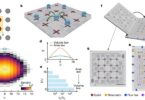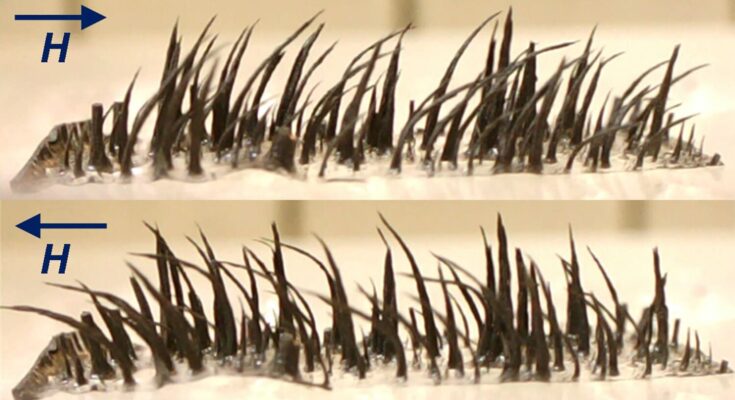HER2 gene expression has prognostic and predictive value in patients with metastatic colorectal cancer (mCRC), and high HER2 expression was associated with survival benefits regardless of treatment with bevacizumab (Avastin) or cetuximab (Erbitux), according to findings from a retrospective analysis of the patient population from the phase 3 CALGB/SWOG 80405 trial (NCT00265850) published in the Journal of Clinical Oncology.1
When HER2 expression was dichotomized at a median of 467, patients with NanoString data with high HER2 expression experienced a median progression-free survival (PFS) of 11.6 months (95% CI, 10.9-12.9) and a median overall survival (OS) of 32.0 months (95% CI, 29.2-34.7) vs 10.0 months (95% CI, 9.3-11.0; P = .012) and 25.3 months (95% CI, 23.6-27.8; P = .033), respectively, in those with low HER2 expression.
“Interestingly, the association between HER2 expression and outcomes showed a nonlinear association in our analysis, demonstrating that OS/PFS/overall response rate [ORR] benefit increased with the HER2 expression increase until the median value was reached, and then this effect diminished when HER2 expression was higher than the median,” study author Heinz-Josef Lenz, MD, of the University of Southern California Norris Comprehensive Cancer Center in Los Angeles, and colleagues, wrote in the paper.
The CALGB/SWOG 80405 trial investigated whether adding cetuximab or bevacizumab to frontline standard chemotherapy (fluorouracil, leucovorin, and oxaliplatin or irinotecan) would produce superior outcomes in patients with mCRC. The primary analysis, which included 1137 patients with KRAS wild-type mCRC, found no significant OS difference between the cetuximab and bevacizumab arms. At a median follow-up of 47.4 months (range, 0-110.7) among 263 surviving patients, the median OS was 30.0 months with cetuximab vs 29.0 months with bevacizumab (stratified HR, 0.88; 95% CI, 0.77-1.01; P = .08).2
Among 1843 patients who consented to participate in correlative studies within the CALGB/SWOG 80405 trial, this study of the prognostic and predictive value of HER2 expression evaluated primary tumor DNA from 559 patients enrolled in SWOG 80405 using next-generation sequencing (NGS).1 This study also evaluated tumor tissue from 925 patients for NanoString gene expression with an 800-gene panel. Furthermore, 505 tumors with both NGS and NanoString data available were included in secondary analyses.
The time-to-event end points of this retrospective analysis were OS and PFS.
In the NanoString cohort, investigators observed no significant differences between tumors with high and low HER2 expression regarding age, sex, race/ethnicity, ECOG performance status, tumor location, number of metastatic sites, and treatment distribution. Microsatellite instability (MSI) status and RAS mutational status were balanced between the HER2 expression groups. BRAF mutations appeared more frequently in the tumors with low HER2 expression (16.9%) than those with high HER2 expression (7.5%; P = .0001). Among the patients in the NanoString cohort with available NGS data, 3% were microsatellite-stable tumors with HER2 amplifications.
RAS wild-type status was more common among HER2-amplified tumors (94%) vs HER2-nonamplified tumors (69%; P = .036). Furthermore, HER2 amplification had a significant association with HER2 expression (P < .001).
Among the patients with available NGS data, 10 patients harbored a HER2 somatic mutation, including known HER2-activating mutations, and 1 patient had 2 concurrent mutations. However, no cases of concomitant HER2 mutations and HER2 amplifications were noted. Nine of 10 of these tumors also had NanoString data available.
In patients with high HER2 expression, the median OS was 35.0 months (95% CI, 30.0-40.6) vs 33.6 months (95% CI, 29.2-36.1) in the cetuximab vs bevacizumab in the HER2-high group, respectively (P = .02). The median PFS was 12.8 months (95% CI, 10.2-14.8) for cetuximab vs 11.5 months (95% CI, 10.6-14.0) for bevacizumab in patients with high HER2 expression (P = .2743).
In patients with low HER2 expression, the median OS was 25.8 months (95% CI, 22.5-30.8) with cetuximab vs 26.3 months (95% CI, 23.6-32.1) for bevacizumab (P = .4652). The median PFS was 9.2 months (95% CI, 8.1-10.9) vs 11.0 months (95% CI, 9.6-12.0), respectively (P = .020). No significant differences in ORR were observed between treatment arms in either HER2 expression group.
HER2 amplification was not prognostic for OS, PFS, or ORR. The median OS was 28.9 months (95% CI, 23.1-51.6) in patients with HER2-amplified tumors vs 30.3 months (95% CI, 26.9-32.7) in those without HER2-amplified tumors (P = .43). These respective values were 13.5 months (95% CI, 9.2-21.0) vs 10.9 months (95% CI, 10.2-11.9) regarding PFS (P = .91), and 75.1% vs 59.1% regarding ORR (P = .20). Furthermore, investigators observed no significant associations by treatment arm, and HER2 amplification was not predictive for OS (Pintx= .58) or PFS (Pintx= .76).
“The low prevalence of tumor HER2 amplification may explain why we did not find any association with patient and treatment outcomes,” the study authors noted.
Furthermore, when modeled as a continuous variable, higher HER2 expression levels that were less than the median value were associated with a longer median OS (HR, 0.83; 95% CI, 0.75-0.93; adjusted P = .0007), PFS (HR, 0.82; 95% CI, 0.74-0.91; adjusted P = .0002), and ORR (adjusted odds ratio, 1.27; 95% CI, 1.04-1.53; P = .016). However, HER2 expression levels that were higher than the median were not associated with additional OS, PFS, and ORR improvements.
In patients with HER2 expression lower than the median, cetuximab treatment was associated with worse PFS outcomes (adjusted HR, 1.38; 95% CI, 1.12-1.71; adjusted P = .0027) and OS outcomes (adjusted HR, 1.28; 95% CI, 1.02-1.60; adjusted P = .03) vs treatment with bevacizumab. This OS association diminished after adjusting for MSI and RAS/BRAF status. Investigators observed significant interactions between HER2 expression and treatment arm for OS (Pintx= .017), PFS (Pintx= .048), and ORR (Pintx= .001).
A sensitivity analysis applied the model to patients with both HER2 amplification and HER2 gene expression data (n = 453). This analysis demonstrated additional prognostic and predictive effects with HER2 expression for OS and PFS, regardless of HER2 amplification status, which remained consistent after adjusting for multiple covariates. Among patients with tumors without HER2 amplification, higher HER2 expression below the median was associated with improved OS (adjusted P = .016) and PFS (adjusted P = .027) outcomes, and treatment with cetuximab was associated with worse PFS (adjusted P = .005) and OS (adjusted P = .04) outcomes compared with treatment with bevacizumab. Investigators observed no significant associations in tumors with HER2 expression higher than the median, independent of HER2 amplification status.
Only 1 patient in the study population had HER2-amplified disease with HER2 tumor expression that was lower than the median; therefore, the investigators performed no comparisons for this group.
A second sensitivity analysis of RAS/BRAF wild-type and non–MSI-high tumors revealed similar patterns, as did a third sensitivity analysis of patients who received bevacizumab or cetuximab in the NanoString group.
Limitations of this study included its retrospective nature and the low number of HER2-amplified tumors in the study population, the authors explained. Additionally, this study did not include HER2 immunohistochemistry and in situ hybridization (ISH)/fluorescence ISH data, and the gene expression threshold used in the study was derived from an internal dataset.
“To use HER2 expression as a predictive biomarker in the clinical setting, future prospective validations are necessary to determine the appropriate cut point and to align expression readouts from different platforms,” the authors concluded. “Once validated, these findings could inform patient selection and the design of more effective treatment options, particularly for patients with low HER2 expression who appear to not benefit from anti-EGFR agents.”
References
- Battaglin F, Ou FS, Qu X, et al. HER2 gene expression levels are predictive and prognostic in patients with metastatic colorectal cancer enrolled in CALGB/SWOG 80405. J Clin Oncol. Published online March 8, 2024. doi:10.1200/JCO.23.01507
- Venook AP, Niedzwiecki D, Lenz HJ, et al. Effect of first-line chemotherapy combined with cetuximab or bevacizumab on overall survival in patients with KRAS wild-type advanced or metastatic colorectal cancer: a randomized clinical trial. JAMA. 2017;317(23):2392-2401. doi:10.1001/jama.2017.7105




